Abstract
1. The pharmacological and kinetic properties of two types of low-voltage-activated (LVA) Ca2+ currents were studied in thalamocortical neurones of the laterodorsal (LD) thalamic nucleus during early postnatal development. The whole-cell patch-clamp technique was used on brain slices from rats of three age groups: 12, 14 and 17 days old (postnatal day (P) 12, P14 and P17). 2. In P12 neurones, the population of LVA Ca2+ channels was homogeneous. LVA Ca2+ current elicited by depolarizing voltage steps from a holding potential more negative than -70 mV was sensitive to nifedipine (Kd = 2.6 microM). This current reached a maximum at about -55 mV and had a fast monoexponential decay with a time constant, tau h,f, of 32.3 +/- 4.0 ms. 3. The population of LVA Ca2+ channels in P14 and P17 neurones was found to be heterogeneous. A subpopulation of nifedipine-insensitive LVA Ca2+ channels was observed. The current-voltage curve of the Ca2+ current had a characteristic hump with two peaks at about -65 and -55 mV. As well as the fast component (designated IT,f), the decay of the LVA current also included a slow component (designated IT,s), with inactivation time constants (tau h,s) of 54.2 +/- 4.5 and 68.6 +/- 3.17 ms for P14 and P17 neurones, respectively. 4. The kinetics of both components could be well approximated by the m2h Hodgkin-Huxley equation. No significant difference in activation kinetics was observed. The activation time constants for the fast (tau m,f) and slow (tau m,s) components were 6.3 +/- 1.0 and 7.3 +/- 1.5 ms, respectively. 5. La3+ at a concentration of 1 microM effectively blocked the IT,f component but Ni2+ (25 microM) completely eliminated the IT,s component. 6. Steady-state inactivation curves of both components could be best fitted by a Boltzmann function with membrane potential values at half-maximal inactivation of -85.5 and -98.1 mV for the fast and slow components, respectively. 7. It was concluded that two different subtypes of LVA Ca2+ channel are present in LD neurones. Only the fast type is well expressed at the earliest postnatal stage (P12). The slow type could be found at the end of the second week (P14). The amplitude of the slow current increased progressively up to P17, obviously coinciding with dendritic expansion as judged by progressive increase of the membrane capacitance of the corresponding neurones. This property appears to differentiate neurones of the associative nuclei from neurones of other thalamic nuclei.
Full text
PDF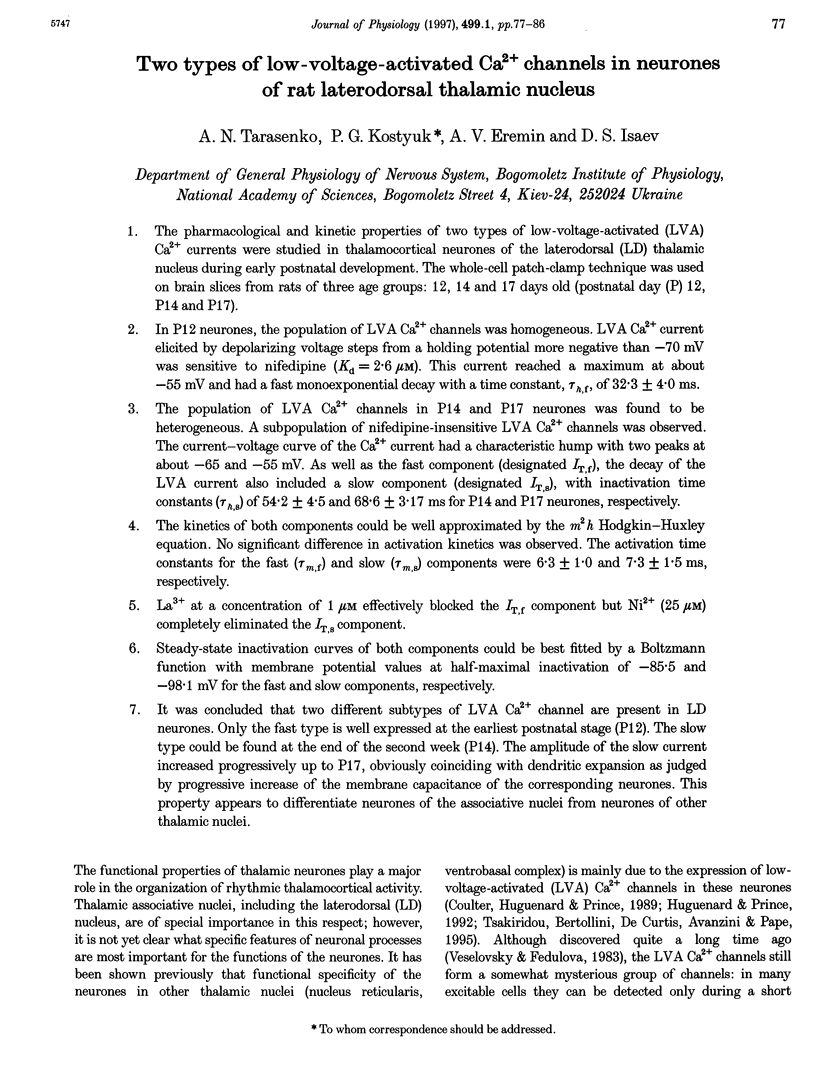
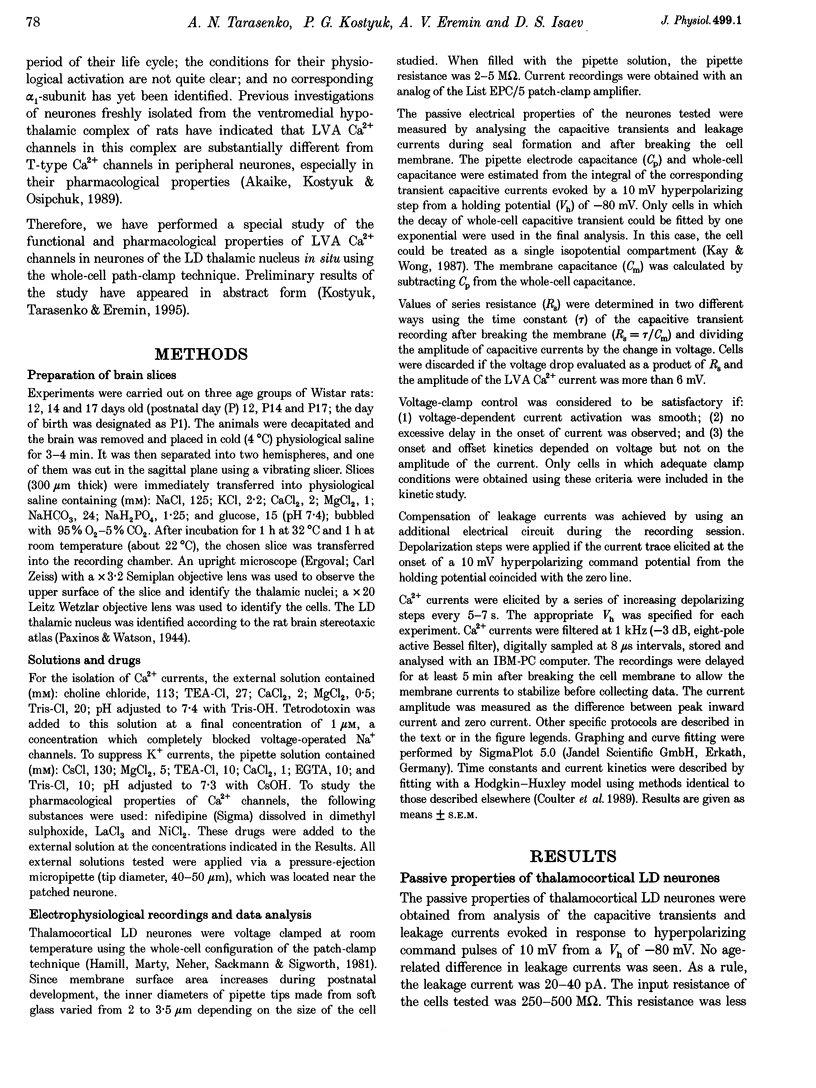
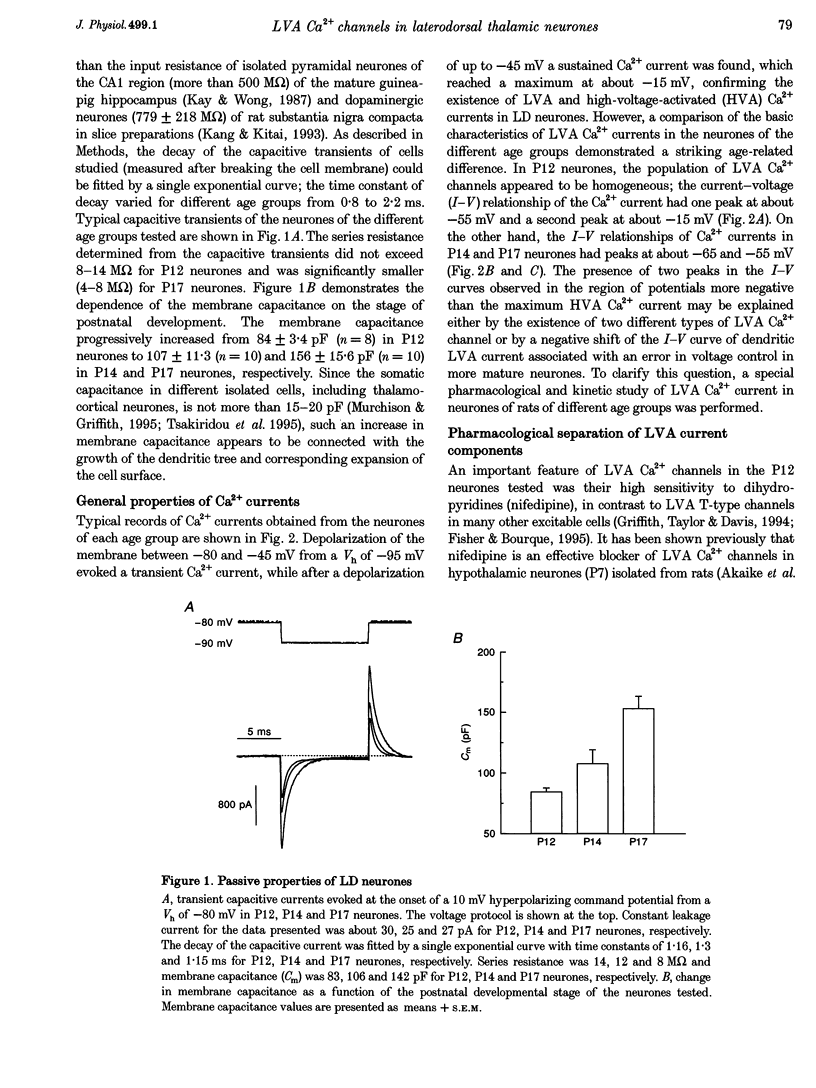
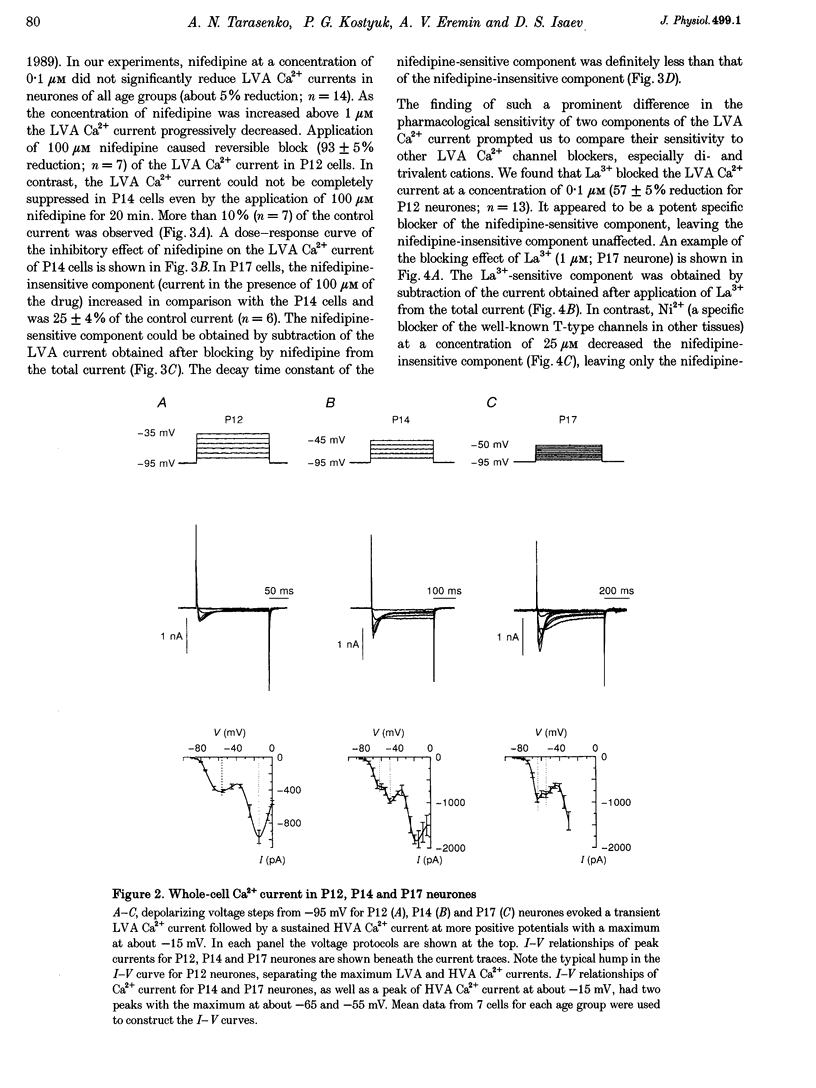
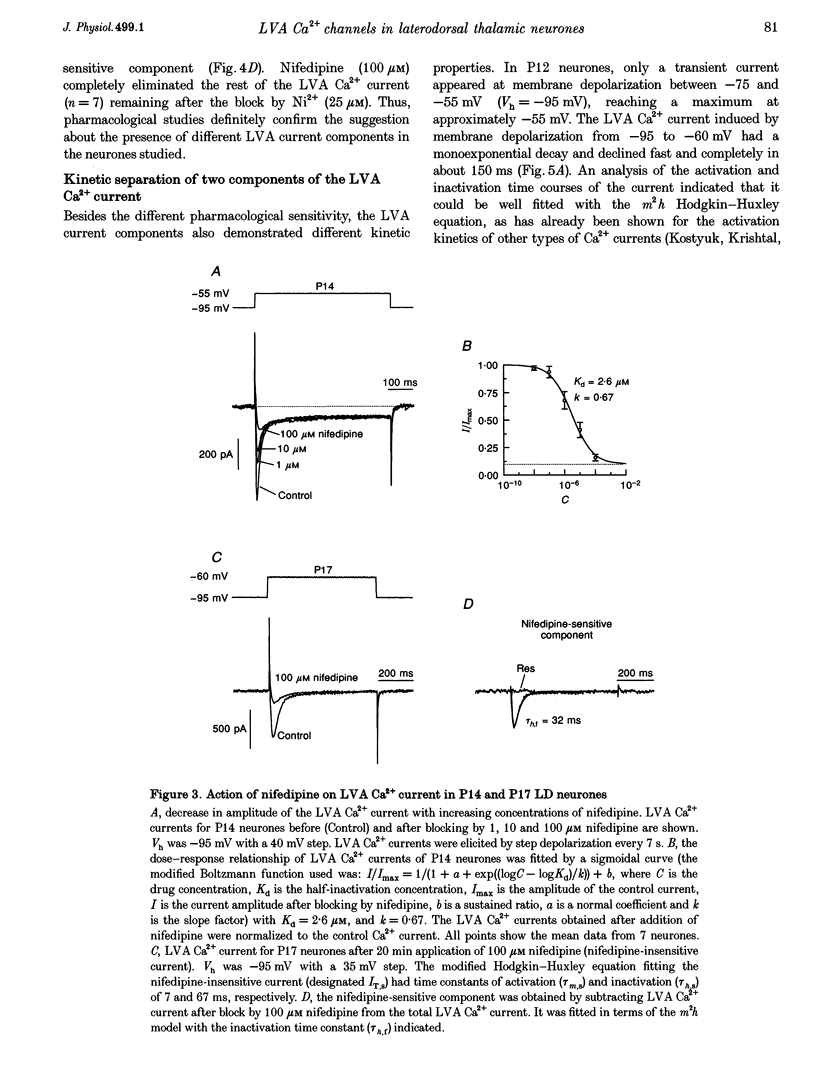
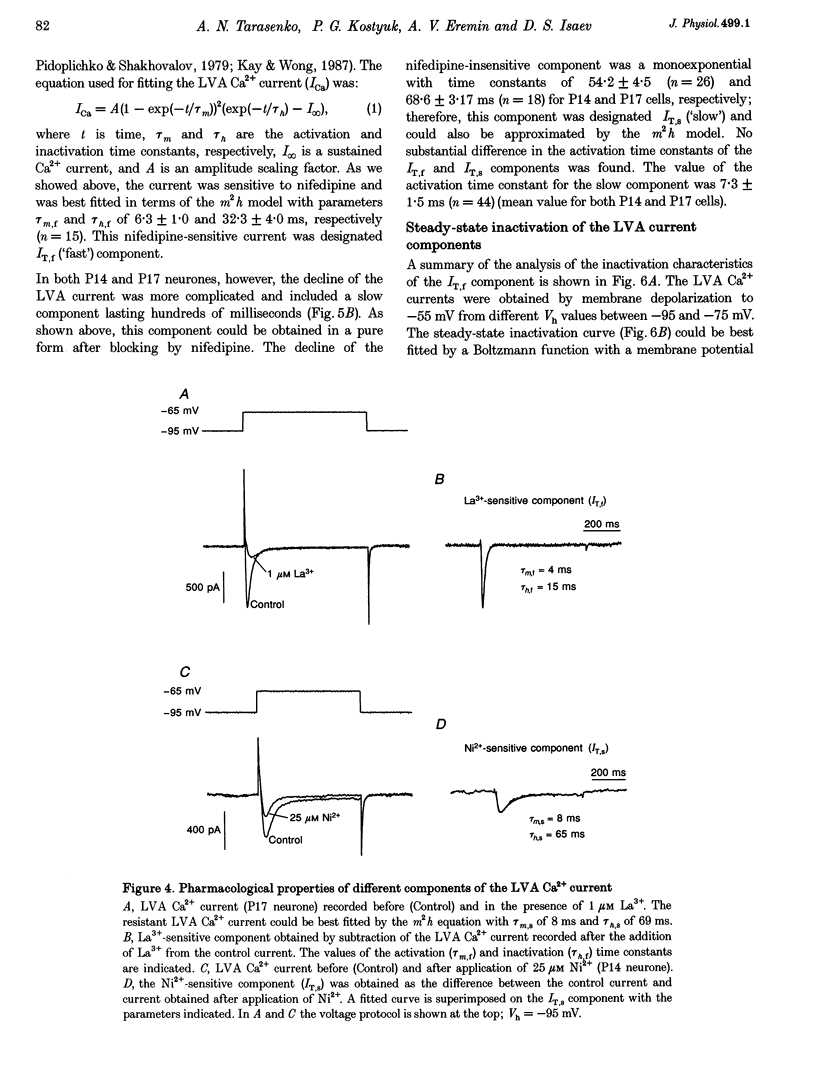
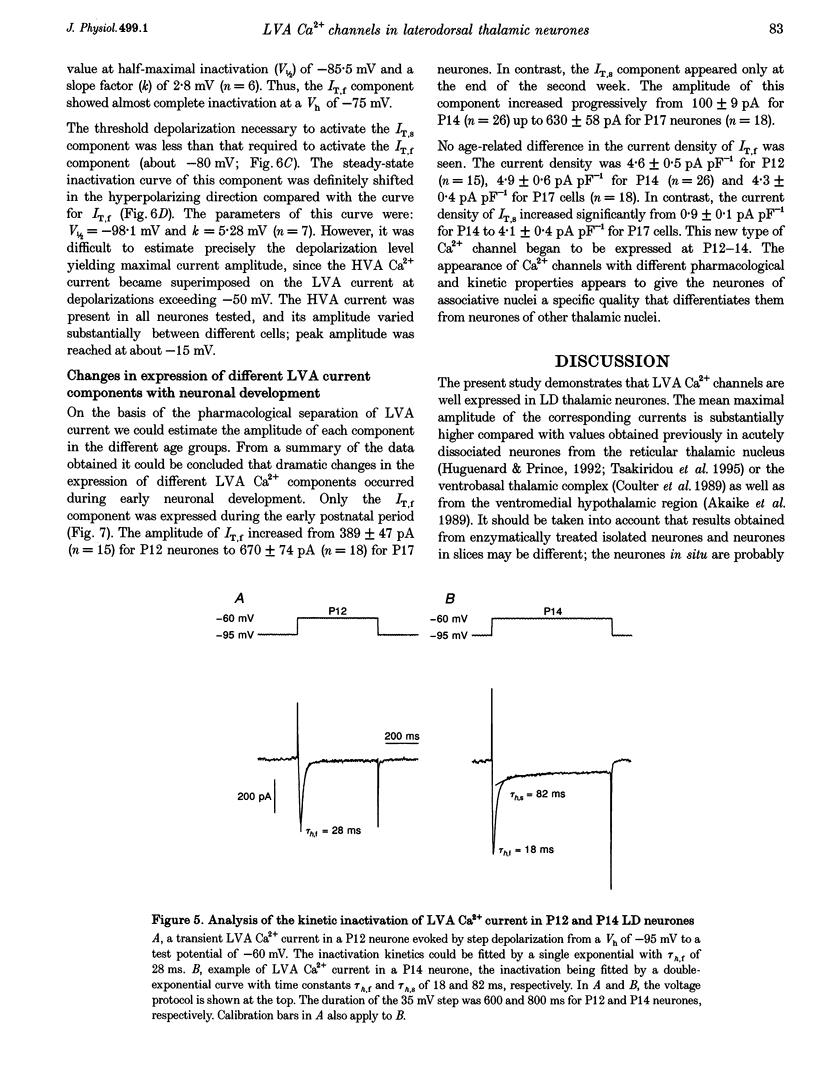
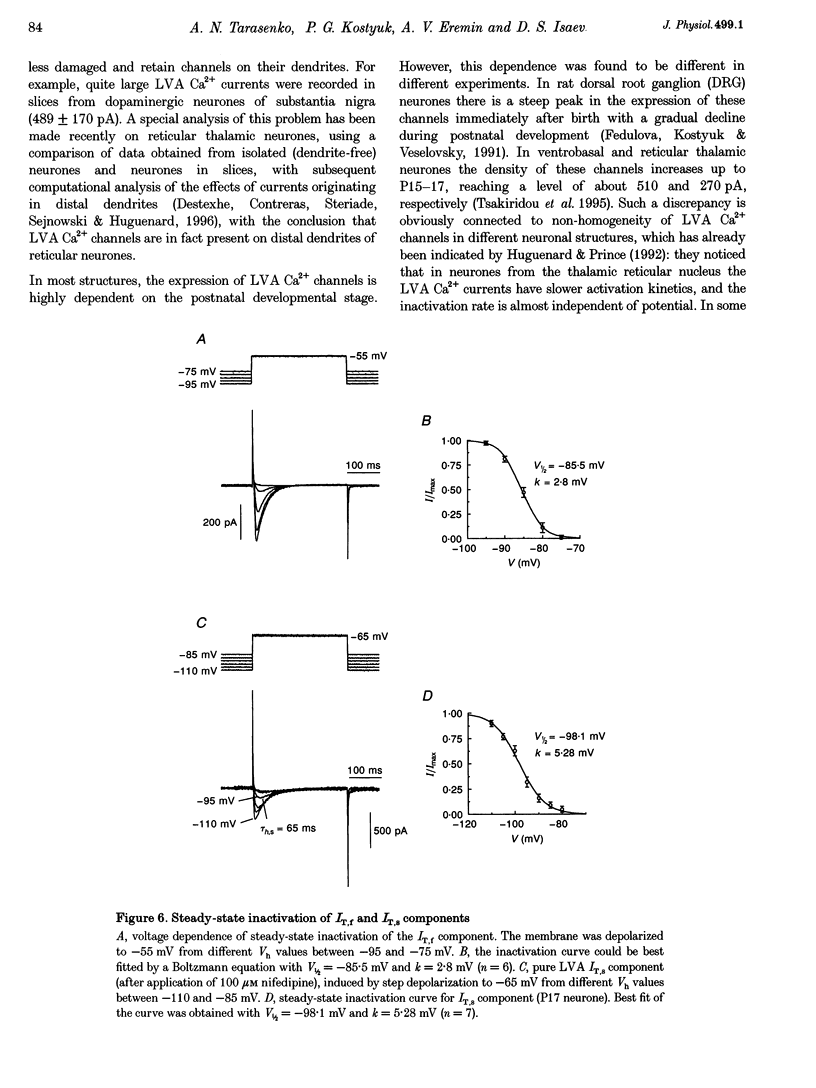
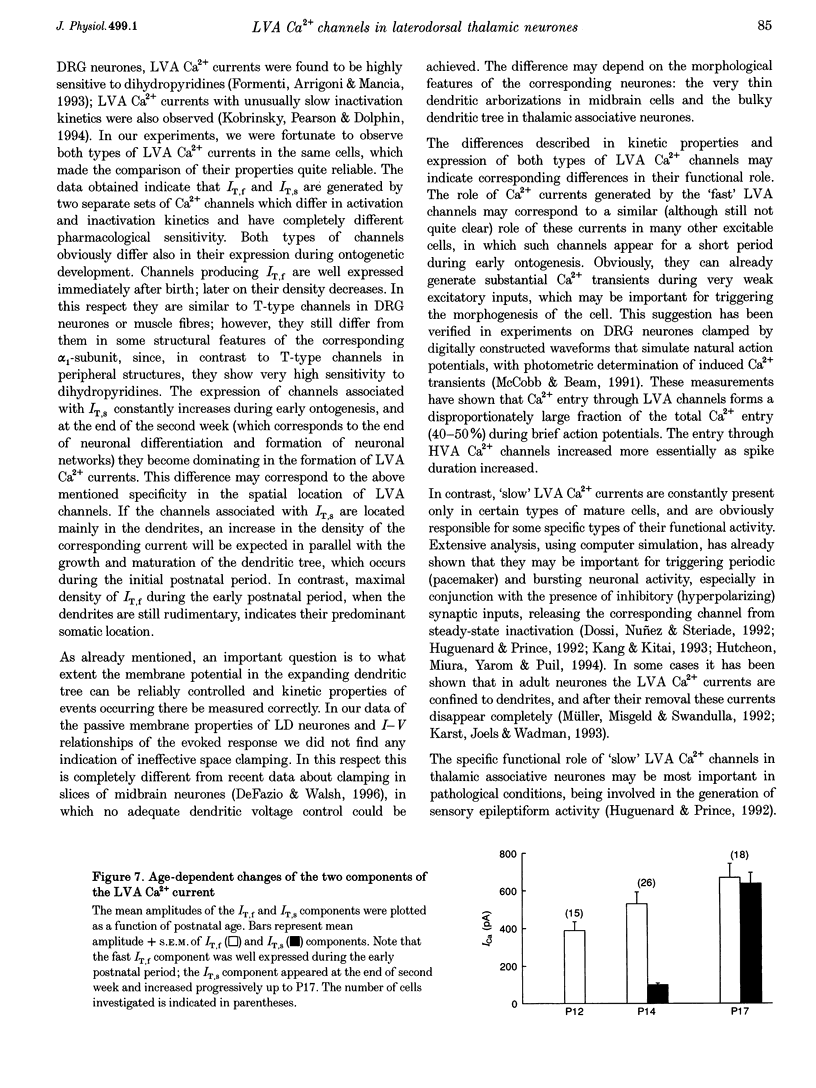
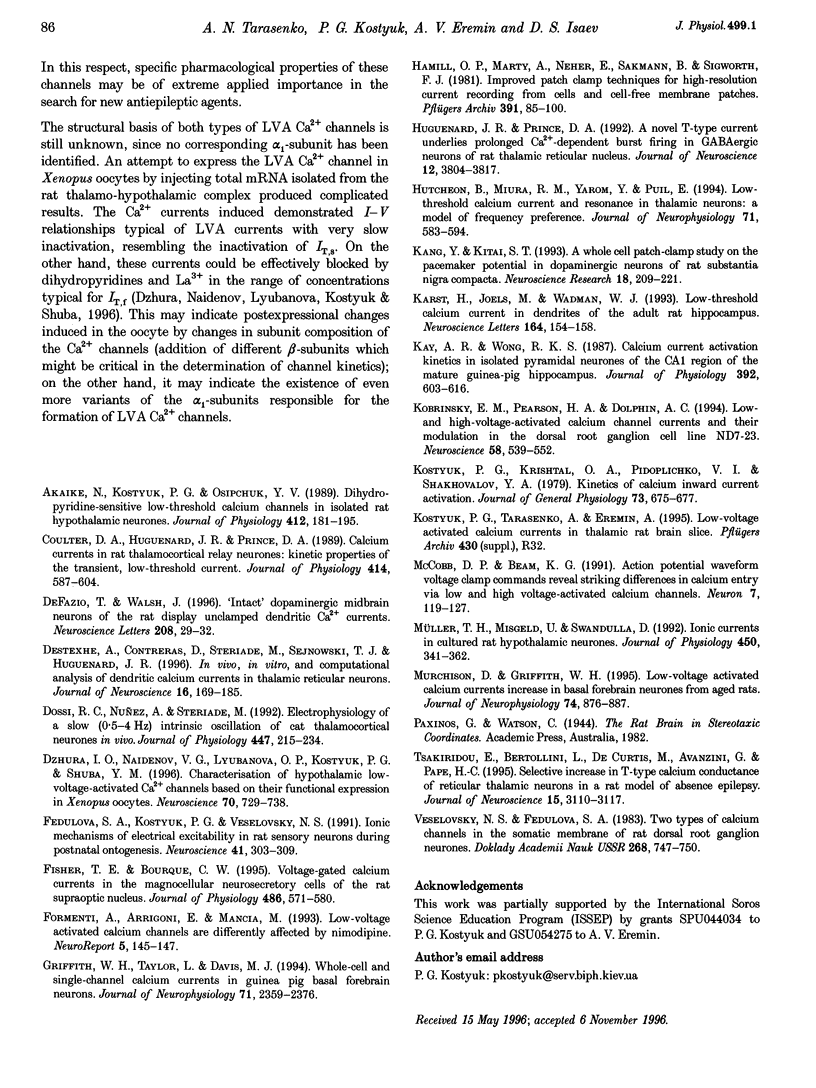
Selected References
These references are in PubMed. This may not be the complete list of references from this article.
- Akaike N., Kostyuk P. G., Osipchuk Y. V. Dihydropyridine-sensitive low-threshold calcium channels in isolated rat hypothalamic neurones. J Physiol. 1989 May;412:181–195. doi: 10.1113/jphysiol.1989.sp017610. [DOI] [PMC free article] [PubMed] [Google Scholar]
- Coulter D. A., Huguenard J. R., Prince D. A. Calcium currents in rat thalamocortical relay neurones: kinetic properties of the transient, low-threshold current. J Physiol. 1989 Jul;414:587–604. doi: 10.1113/jphysiol.1989.sp017705. [DOI] [PMC free article] [PubMed] [Google Scholar]
- DeFazio T., Walsh J. P. 'Intact' dopaminergic midbrain neurons of the rat display unclamped dendritic Ca2+ currents. Neurosci Lett. 1996 Apr 12;208(1):29–32. doi: 10.1016/0304-3940(96)12543-x. [DOI] [PubMed] [Google Scholar]
- Destexhe A., Contreras D., Steriade M., Sejnowski T. J., Huguenard J. R. In vivo, in vitro, and computational analysis of dendritic calcium currents in thalamic reticular neurons. J Neurosci. 1996 Jan;16(1):169–185. doi: 10.1523/JNEUROSCI.16-01-00169.1996. [DOI] [PMC free article] [PubMed] [Google Scholar]
- Dossi R. C., Nuñez A., Steriade M. Electrophysiology of a slow (0.5-4 Hz) intrinsic oscillation of cat thalamocortical neurones in vivo. J Physiol. 1992 Feb;447:215–234. doi: 10.1113/jphysiol.1992.sp018999. [DOI] [PMC free article] [PubMed] [Google Scholar]
- Dzhura I. O., Naidenov V. G., Lyubanova O. P., Kostyuk P. G., Shuba Y. M. Characterization of hypothalamic low-voltage-activated Ca channels based on their functional expression in Xenopus oocytes. Neuroscience. 1996 Feb;70(3):729–738. doi: 10.1016/s0306-4522(96)83010-7. [DOI] [PubMed] [Google Scholar]
- Fedulova S. A., Kostyuk P. G., Veselovsky N. S. Ionic mechanisms of electrical excitability in rat sensory neurons during postnatal ontogenesis. Neuroscience. 1991;41(1):303–309. doi: 10.1016/0306-4522(91)90219-e. [DOI] [PubMed] [Google Scholar]
- Fisher T. E., Bourque C. W. Voltage-gated calcium currents in the magnocellular neurosecretory cells of the rat supraoptic nucleus. J Physiol. 1995 Aug 1;486(Pt 3):571–580. doi: 10.1113/jphysiol.1995.sp020835. [DOI] [PMC free article] [PubMed] [Google Scholar]
- Formenti A., Arrigoni E., Mancia M. Low-voltage activated calcium channels are differently affected by nimodipine. Neuroreport. 1993 Nov 18;5(2):145–147. doi: 10.1097/00001756-199311180-00012. [DOI] [PubMed] [Google Scholar]
- Griffith W. H., Taylor L., Davis M. J. Whole-cell and single-channel calcium currents in guinea pig basal forebrain neurons. J Neurophysiol. 1994 Jun;71(6):2359–2376. doi: 10.1152/jn.1994.71.6.2359. [DOI] [PubMed] [Google Scholar]
- Hamill O. P., Marty A., Neher E., Sakmann B., Sigworth F. J. Improved patch-clamp techniques for high-resolution current recording from cells and cell-free membrane patches. Pflugers Arch. 1981 Aug;391(2):85–100. doi: 10.1007/BF00656997. [DOI] [PubMed] [Google Scholar]
- Huguenard J. R., Prince D. A. A novel T-type current underlies prolonged Ca(2+)-dependent burst firing in GABAergic neurons of rat thalamic reticular nucleus. J Neurosci. 1992 Oct;12(10):3804–3817. doi: 10.1523/JNEUROSCI.12-10-03804.1992. [DOI] [PMC free article] [PubMed] [Google Scholar]
- Hutcheon B., Miura R. M., Yarom Y., Puil E. Low-threshold calcium current and resonance in thalamic neurons: a model of frequency preference. J Neurophysiol. 1994 Feb;71(2):583–594. doi: 10.1152/jn.1994.71.2.583. [DOI] [PubMed] [Google Scholar]
- Kang Y., Kitai S. T. A whole cell patch-clamp study on the pacemaker potential in dopaminergic neurons of rat substantia nigra compacta. Neurosci Res. 1993 Dec;18(3):209–221. doi: 10.1016/0168-0102(93)90056-v. [DOI] [PubMed] [Google Scholar]
- Karst H., Joëls M., Wadman W. J. Low-threshold calcium current in dendrites of the adult rat hippocampus. Neurosci Lett. 1993 Dec 24;164(1-2):154–158. doi: 10.1016/0304-3940(93)90880-t. [DOI] [PubMed] [Google Scholar]
- Kay A. R., Wong R. K. Calcium current activation kinetics in isolated pyramidal neurones of the Ca1 region of the mature guinea-pig hippocampus. J Physiol. 1987 Nov;392:603–616. doi: 10.1113/jphysiol.1987.sp016799. [DOI] [PMC free article] [PubMed] [Google Scholar]
- Kobrinsky E. M., Pearson H. A., Dolphin A. C. Low- and high-voltage-activated calcium channel currents and their modulation in the dorsal root ganglion cell line ND7-23. Neuroscience. 1994 Feb;58(3):539–552. doi: 10.1016/0306-4522(94)90079-5. [DOI] [PubMed] [Google Scholar]
- Kostyuk P. G., Krishtal O. A., Pidoplichko V. I., Shakhovalov YuA Kinetics of calcium inward current activation. J Gen Physiol. 1979 May;73(5):675–680. doi: 10.1085/jgp.73.5.675. [DOI] [PMC free article] [PubMed] [Google Scholar]
- McCobb D. P., Beam K. G. Action potential waveform voltage-clamp commands reveal striking differences in calcium entry via low and high voltage-activated calcium channels. Neuron. 1991 Jul;7(1):119–127. doi: 10.1016/0896-6273(91)90080-j. [DOI] [PubMed] [Google Scholar]
- Murchison D., Griffith W. H. Low-voltage activated calcium currents increase in basal forebrain neurons from aged rats. J Neurophysiol. 1995 Aug;74(2):876–887. doi: 10.1152/jn.1995.74.2.876. [DOI] [PubMed] [Google Scholar]
- Müller T. H., Misgeld U., Swandulla D. Ionic currents in cultured rat hypothalamic neurones. J Physiol. 1992 May;450:341–362. doi: 10.1113/jphysiol.1992.sp019130. [DOI] [PMC free article] [PubMed] [Google Scholar]
- Tsakiridou E., Bertollini L., de Curtis M., Avanzini G., Pape H. C. Selective increase in T-type calcium conductance of reticular thalamic neurons in a rat model of absence epilepsy. J Neurosci. 1995 Apr;15(4):3110–3117. doi: 10.1523/JNEUROSCI.15-04-03110.1995. [DOI] [PMC free article] [PubMed] [Google Scholar]


